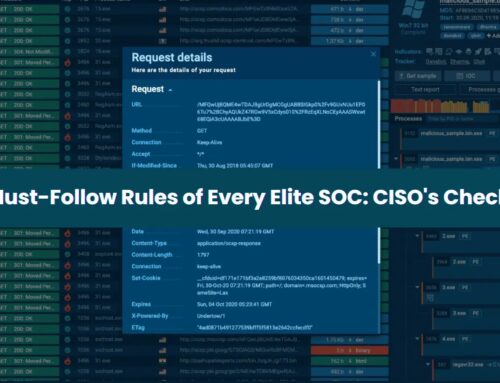
10,000+ Malicious TikTok Shop Domains Attacking Users to Steal Logins and Deploy Malware
Unmasking ClickTok: The 10,000+ Malicious TikTok Shop Domains Exploiting Users
The digital landscape of e-commerce is constantly evolving, bringing convenience and accessibility to millions. However, this growth also creates fertile ground for sophisticated cybercriminal operations. A stark example of this escalating threat is the emergence of “ClickTok,” a massive and sophisticated campaign that has leveraged over 10,000 malicious domains to target TikTok Shop users globally. This operation represents a significant escalation in e-commerce-focused cyberattacks, combining traditional phishing techniques with cutting-edge malware distribution to steal credentials and deploy advanced spyware.
The Anatomy of the ClickTok Campaign
ClickTok is not a standard phishing attempt; it’s a meticulously crafted, multi-faceted operation designed for maximum impact. Cyber adversaries have registered and weaponized more than 10,000 domains, all designed to mimic legitimate TikTok Shop interfaces. This sheer volume indicates a well-resourced and highly organized group rather than isolated opportunistic attacks.
- Credential Theft: The primary objective of many of these fraudulent domains is to deceive users into divulging their TikTok login credentials, along with other sensitive personal and financial information. By meticulously replicating the authentic look and feel of TikTok Shop, these sites trick users into entering their data, which is then siphoned off by the attackers.
- Malware Deployment: Beyond mere phishing, ClickTok domains are also being used as a staging ground for advanced spyware. Once a user interacts with a malicious site, a variety of sophisticated malware can be deployed onto their device. This malware is designed to harvest even more data, monitor user activity, and potentially gain control over the compromised device, leading to further financial fraud or data exfiltration.
- Exploiting Trust in E-commerce: The success of ClickTok hinges on the inherent trust users place in popular e-commerce platforms like TikTok Shop. By exploiting this trust, attackers are able to bypass initial suspicions, making their attacks far more effective than generic phishing emails or text messages.
Understanding the Threat Landscape
The scale of the ClickTok campaign highlights several critical considerations for cybersecurity professionals and everyday users alike:
- Domain Proliferation: The registration of over 10,000 malicious domains in a relatively short period underscores the ease with which cybercriminals can acquire and weaponize digital real estate. This makes detection and blacklisting a continuous cat-and-mouse game.
- Advanced Social Engineering: The campaign employs highly refined social engineering tactics. Rather than relying on easily identifiable errors, these domains often feature high-fidelity impersonations, making it challenging for even vigilant users to discern their fraudulent nature.
- Supply Chain Implications: While directly targeting users, the broader implications could extend to the e-commerce supply chain itself if compromised credentials grant access to vendor or seller accounts, leading to further fraud or disruption.
Remediation Actions and Prevention
Protecting yourself and your organization from campaigns like ClickTok requires a multi-layered approach emphasizing user education, robust security practices, and proactive threat intelligence.
- Verify URLs Always: Before interacting with any login page or making a purchase, meticulously check the URL. Legitimate TikTok Shop URLs will always begin with
tiktok.comorshop.tiktok.com. Look for subtle misspellings, additional words, or different top-level domains (e.g.,.net,.org,.infoinstead of.com). - Use Multi-Factor Authentication (MFA): Enable MFA on all your online accounts, especially for e-commerce platforms and social media. Even if your password is stolen, MFA acts as a critical second line of defense.
- Be Wary of Unsolicited Links: Avoid clicking on links in unsolicited emails, text messages, or direct messages, even if they appear to come from TikTok Shop. Always navigate directly to the official website or app.
- Keep Software Updated: Ensure your operating system, web browsers, and all security software (antivirus, anti-malware) are consistently updated. Patches often address vulnerabilities that attackers exploit to deploy malware.
- Deploy Advanced Endpoint Protection: For organizations, deploying advanced endpoint detection and response (EDR) solutions can help identify and neutralize malware even if a user accidentally activates it.
- Monitor for Suspicious Activity: Regularly review your account activity for unauthorized purchases or login attempts. Report any suspicious activity immediately to TikTok and your financial institution.
- Educate Users: Conduct regular security awareness training for employees, emphasizing the dangers of phishing, social engineering, and the importance of URL verification.
Tools for Detection and Mitigation
| Tool Name | Purpose | Link |
|---|---|---|
| PhishTank | Community-based phishing URL verification | https://www.phishtank.com/ |
| Brand Protection Services | Monitors for brand impersonation and malicious domain registrations | (Varies by vendor; e.g., MarkMonitor, OpSec) |
| Threat Intelligence Platforms (TIPs) | Aggregates and analyzes threat data, including malicious domains | (Varies by vendor; e.g., Mandiant, Recorded Future) |
| DNS Filtering Solutions | Blocks access to known malicious domains at the DNS level | (Varies by vendor; e.g., Cisco Umbrella, Cloudflare Gateway) |
| Advanced Endpoint Protection (EPP/EDR) | Detects and prevents malware execution on user devices | (Varies by vendor; e.g., CrowdStrike, SentinelOne, Microsoft Defender for Endpoint) |
Conclusion: Staying Vigilant in a Shifting Cyber Landscape
The ClickTok campaign serves as a powerful reminder that cyber threats are becoming increasingly sophisticated and pervasive, particularly in the realm of e-commerce. The sheer volume of over 10,000 malicious domains targeting TikTok Shop users illustrates the unwavering focus cybercriminals have on exploiting trusted platforms and user habits. Proactive verification, robust security measures like MFA, and continuous user education are not merely best practices; they are essential defenses in an environment where the line between legitimate and malicious activity is designed to be blurred. Staying informed and exercising extreme caution are paramount to safeguarding your digital identity and financial well-being against these evolving threats.





